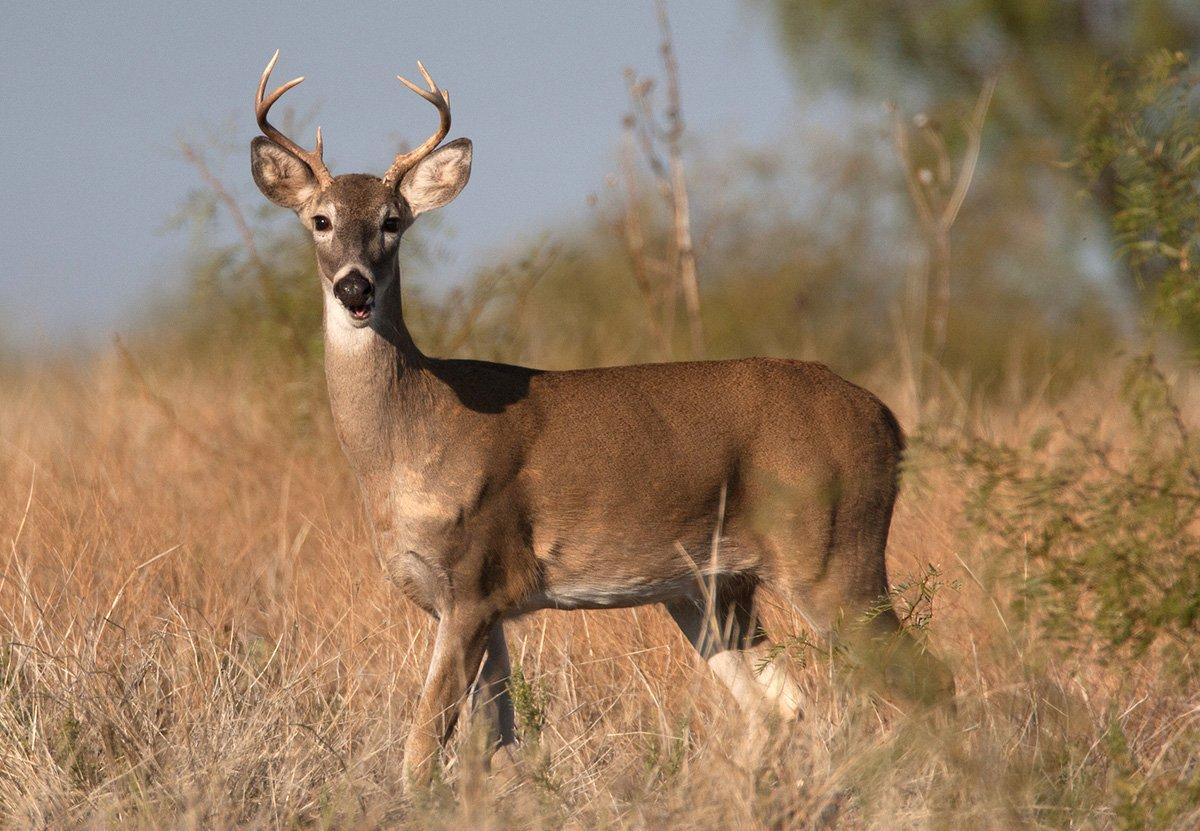Before they're a year old, most yearling whitetail males pick up and leave home. Here's why
Imagine a life where you're forced to abandon everyone you've ever known. Family, friends, and acquaintances are all left behind, never to be seen again. That's life for most whitetail bucks, and some does, too.
According to Duane Diefenbach with the Penn State Deer Study Group, 50 to 80% of males and up to 20% of females disperse. Lucky for hunters, biologists have picked apart the when, where, why and how of this phenomenon.
Deer Dispersal: The When and Why
Generally, young bucks disperse between 6 and 18 months of age, with most leaving home between 12 and 14 months. Deer are believed to disperse for two reasons. First, does drive young males out of their home ranges to reduce stress on food sources. Also, females set up a matriarchal group with a hierarchy, and don't like having bucks around their fawns.
Many scientists believe male dispersal also happens to prevent inbreeding and increase the odds of reproductive success. Penn State research also confirmed that as deer density increases, dispersal rates increase, which reinforces the theory that deer leave as resources become more limited. It also proves that younger bucks seek out areas of lower deer density to increase their chances of procreating.
The largest known dispersal distance is in South Dakota, where a yearling buck traveled 131 miles to establish its adult home range.
Hunters, land managers and policymakers can influence dispersal. Antler-point restrictions are prime examples. When antler-point restrictions were implemented, the proportion of yearling males that dispersed in the fall went from 50% to 70%, Diefenbach says. With more older males in the population, there was more male-male competition for mating. There were more big fish in the pond, making it harder for those little fish to find a date. This reality would encourage more yearling males to disperse in the fall to seek out areas with less competition from other males.
Deer Dispersal: The Where and How
Diefenbach's research showed that, in most instances, there was no north, south, east or west dispersal preference. However, geographical features large enough to influence line of travel — both natural and manmade — can dictate dispersal direction. In hill country with consistently oriented ridges (i.e.: east-to-west or north-to-south), researchers determined that dispersal direction is influenced by how these ridges run, and dispersal oftentimes parallels these.
As for relocation distance, deer tend to disperse farthest in wide-open landscapes with little cover because it takes more time (and travel distance) to find a new home that isn't already overrun with other deer. This is common in agricultural areas with big fields and little pockets of bedding. Areas with better habitat — evenly proportioned security cover and food — hold more deer, and those that disperse generally don't travel as far from their natal home ranges.
According to the QDMA, based on studies that analyze forest cover percentage, it appears that deer dispersal is the widest in the Midwest, followed by the West, then Northeast, and it's the least in the Southeast. The largest known dispersal distance is in South Dakota, where a yearling buck traveled 131 miles to establish its adult home range.
So, when it happens, how long does it take? After radio-collaring 543 bucks — 454 of which were captured long before their first birthday — Penn State researchers learned that once young bucks decide to move, they do it in less than 24 hours. Generally, it's a straight-line movement (whereas does tend to wander around on the landscape).
Using This Knowledge
Whitetail biologists Stefan Holzenbein and Larry Marchinton determined that yearling males are less likely to disperse if orphaned as button bucks. They also proved that button bucks that lose their mothers prior to dispersal have a higher chance of survival than those that don't lose their mother. Fawns that have the same natal and adult home ranges already know locations of threats (treestands, predator dens, roads, etc.). They don't experience as many perils as deer that uproot and relocate.
Based on this research, it's possible to manipulate buck dispersal on the local level. Tag does that birth multiple button bucks in the same season. That's a good way to keep those males on the property. Don't kill every doe on the farm, but selective antlerless harvest keeps more home-grown fawns from leaving, all while yearling bucks from neighboring lands are moving in. Over time, a healthy balance of doe removal and preventing some button bucks from dispersing balances the buck-to-doe ratio.
The best news? Whether home-grown or dispersing into the area, once there, they likely won't leave, as 2 ½-plus-year-old bucks are very loyal their new home ranges. Keep food, water and cover levels high, and hunting pressure low, and deer won't have a reason to stray. They don't want to anyway. That's the most important takeaway in whitetail dispersal.









